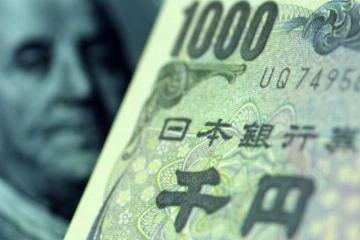On January 3rd, 2023, the Japanese Yen made headlines as it surged against the US Dollar by 0.7%, reaching an impressive exchange rate of 129.78 Yen to 1 DollarThis development is significant, not only because it exceeded the highest rate from last August (130.41 Yen) but also because it marked the Yen's strongest performance since June of the previous year.
The optimism surrounding the Yen was partly fueled by a recent policy meeting held by the Bank of Japan (BOJ). During this meeting, the BOJ announced a slight adjustment to its ultra-loose monetary policy by widening the long-term interest rate fluctuation band from ±0.25% to ±0.5%. Analysts interpreted this move as a possible signal that the BOJ may be preparing to alter its policy direction sooner than previously anticipated.
Yen Revival
The strength of the US Dollar surged significantly from March 2022 onwards when the Federal Reserve shifted its monetary policy, implementing several stunning interest rate hikes that negatively impacted other major currencies, including the Yen.
As the world's sole major central bank maintaining negative interest rates, the BOJ has adhered to its Yield Curve Control (YCC) framework, maintaining short-term rates at -0.1% and keeping the 10-year government bond yield within the 0±0.25% range
Advertisements
While this YCC helps keep bond yields low and effectively mitigates deflation risks, it has also diminished the attractiveness of Japanese government bonds to investors.
The widening interest rate gap between Japan and the United States led to a significant sell-off of the Yen, plunging it to a staggering low of 151.94 Yen per Dollar in October 2022—a level not seen in three decades.
However, a combination of government interventions, a slowdown in Fed rate hikes, and rising expectations about the BOJ shifting its policy stance have contributed to a significant Yen rebound since thenSince its low point in October, the Yen has experienced a remarkable recovery, climbing approximately 16%.
Prior market predictions suggested that BOJ Governor Haruhiko Kuroda would hold off on rate hikes until April when he is expected to step down
Advertisements
As such, many anticipated that a reversal in the Yen's fortunes would not emerge until spring 2023.
Yet, the BOJ emerged with surprising announcements at the monetary policy meeting on December 20, increasing the upper limit of long-term interest rates to 0.5%. This marked a notable shift from its previous cap of approximately 0.25%, with the last adjustment having been in March 2021.
Nonetheless, Kuroda spoke on December 26, asserting that this latest adjustment to the bond yield control plan should not be viewed as an initial step towards exiting loose monetary policyInstead, he emphasized that this would serve to ensure the central bank's strategies could operate sustainably and smoothly.
During a speech at an event hosted by the Japan Business Federation, Kuroda stated, “This is absolutely not a step towards an exit
Advertisements
The central bank is committed to achieving stable price targets sustainably while improving wages and continuing to ease monetary policy under the yield curve control framework.” He highlighted that this move was meant to enhance market functionality following observed deterioration in the Japanese bond market, aiming to provide maximum support through persistent loose financial conditions.
The summary from the BOJ's December meeting revealed that decision-makers recognized the necessity of maintaining ultra-low rates while discussing the potential for wage increases to comprehensively eliminate the risk of reverting to deflation.
Former Deputy Minister of Finance, Eizaburo Nishibori, informally known as “Mr
- Credit Suisse Implosion Sparks Global Financial Jitters
- Gold Prices Soar Above $2000!
- DeLijia's IPO: Poised for Growth Amidst Challenges
- Sunac China Faces New Liquidation Challenge
- Country Garden Navigates a Major Crisis
Yen,” expressed in an interview following the BOJ's adjustment of the YCC that the central bank might begin tightening its monetary policy as soon as January 2023, potentially catching markets off guard again.
Economic Struggles
Japan currently faces soaring energy import prices, leading the country to experience its highest inflation rate in four decadesAccording to a survey, nearly 90% of companies believe that high inflation is the primary risk that businesses will face in 2023, while 68% stress that curbing inflation should be a government priority.
Data released in December highlighted that Japan's core Consumer Price Index (CPI) increased year-on-year by 3.7% in November, the sharpest rise since December 1981, slightly exceeding the previous value of 3.6%. This means Japan's core CPI has risen for fifteen consecutive months.
The persistence of key inflation indicators surpassing the BOJ's 2% inflation target for eight straight months signifies that the specter of inflation continues to loom over the Japanese economy.
In addition to inflationary pressures, the Ministry of Finance recently released trade statistics for November 2022, revealing that Japan had logged trade deficits for 16 consecutive months, largely attributed to the Yen's depreciation and soaring energy prices

The trade deficit for November amounted to a staggering 2.0274 trillion Yen, surpassing the previous high recorded in November 2013.
According to Yang Aozheng, Chief Chinese Analyst at FXTM, typically, a depreciated Yen would benefit Japan's goods exportsHowever, due to the significant increase in import prices for energy, production materials, construction supplies, and food resulting from the Yen's depreciation, along with the inability of export growth to keep pace with rising import costs, a sustained trade deficit has ensued.
Senior Japanese economist at Capital Economics, Tyleent, suggested that Japan could slip into recession later this year due to declining exports and various contributing factors.
Industry experts believe that as the Yen's value increases, the consequent rise in the prices of imported goods and food is likely to ease, favoring individual consumption
 March 10, 2025
March 10, 2025